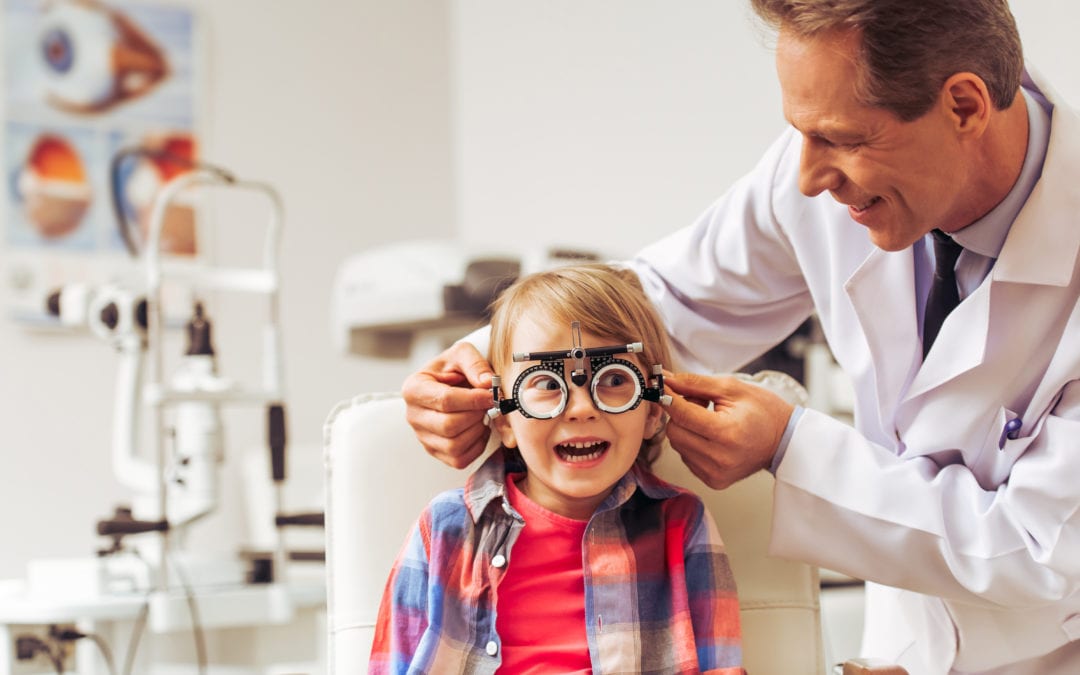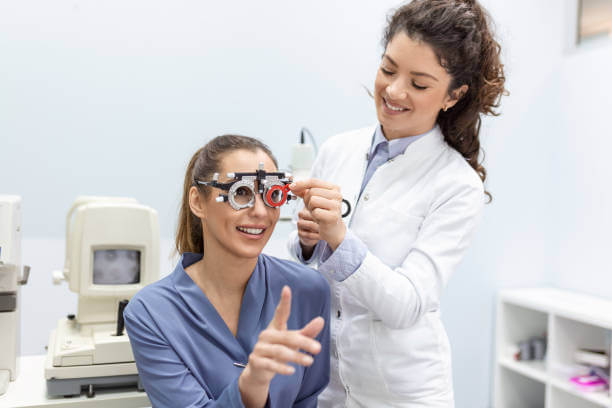Your Local Eye Doctor Optometrist: Committed to Clear Vision in Riverside
Your Local Eye Doctor Optometrist: Committed to Clear Vision in Riverside
Blog Article
The Comprehensive Eye Exam: What to Anticipate During Your Visit to the Eye Physician
A check out to the eye doctor for a thorough eye test is even more than a regular exam; it is a crucial action in protecting your aesthetic health and wellness. What exactly happens during the eye health assessment, and how does it affect the prescription process?
First Examination
The initial consultation throughout an eye exam serves as a crucial structure for understanding a person's aesthetic health demands. This phase establishes the tone for the whole exam process, allowing the eye doctor to gather important info regarding the patient's case history, way of living, and specific vision problems. By diligently examining any type of pre-existing problems, medications, or previous surgical procedures, the eye treatment expert can customize the examination to deal with specific demands effectively.

Furthermore, the initial appointment is an opportunity for clients to articulate any kind of worries or concerns, promoting a collective partnership with their healthcare company. This interaction not only guarantees that the client feels informed and comfy yet additionally equips them to take part proactively in their eye wellness monitoring. Collectively, these discussions enable the optometrist to devise a customized examination strategy, guaranteeing optimal treatment and accurate diagnosis.
Visual Acuity Examination
Beginning the core components of an eye assessment, the visual skill examination is made to evaluate the intensity and clarity of a client's vision. This important assessment aids establish just how well a person can determine letters or symbols at a standard distance, typically making use of a Snellen graph (Optometrist Riverside). The graph consists of rows of letters that lower in dimension inside out, with the individual positioned at a normal distance of 20 feet
During the examination, the patient is asked to cover one eye and read out loud the smallest line of letters they can see clearly. This procedure is duplicated for the various other eye. The results are tape-recorded as a portion, with 20/20 vision showing normal visual skill-- where the person can see at 20 feet what a person with normal vision can see at that distance.
The aesthetic skill examination also determines potential refractive mistakes such as nearsightedness, hyperopia, or astigmatism, which might necessitate rehabilitative lenses. By developing a standard of visual efficiency, the examination is a vital analysis device that aids the eye care expert in establishing a proper therapy strategy customized to the individual's distinct visual needs.
Eye Health Assessment
Complying with the visual skill examination, a thorough eye health and wellness evaluation is carried out to ensure the total wellness of the eyes. This crucial section of the eye exam entails a complete assessment of both the internal and exterior structures of the eye.
With the use of ophthalmoscopy or fundus photography, the retina, optic nerve, and blood vessels are carefully reviewed. In several cases, student extension is done to improve exposure of the internal eye frameworks, although this might result in temporary light level of sensitivity for the person.
In addition, intraocular pressure is determined to screen for glaucoma threat. This is commonly done using tonometry, which can identify elevated pressure levels that may recommend prospective damage to the optic nerve. Jointly, these analyses create a comprehensive evaluation to maintain ocular health.
Refraction and Prescription
How does one ensure optimum vision? A critical step exists in the procedure of refraction and acquiring an accurate prescription. Refraction is an innovative treatment conducted by eye treatment specialists to figure out the accurate lens power required to correct refractive errors such as myopia, hyperopia, presbyopia, and astigmatism. The objective of this treatment is to evaluate exactly how light bends as it goes through the eye, enabling the professional to establish whether corrective lenses are essential for boosted aesthetic acuity.
Throughout the refraction process, the patient is asked to browse a phoropter, a tool which contains different lenses. The specialist will methodically change these lenses and ask the visit the website client to compare clearness between choices up until the most effective feasible vision is attained. This treatment is crucial in crafting an accurate prescription that defines the appropriate lens power for glasses or get in touch with lenses.
The prescription stemmed from this treatment not only enhances vision yet likewise acts as a structure for picking suitable corrective eyewear. It is vital to guarantee that prescriptions are frequently updated, as adjustments in vision can occur gradually, stressing the value of routine eye assessments. This thorough attention to information assists preserve clear, comfy vision in day-to-day life.
Follow-Up Recommendations

During a follow-up visit, the eye doctor will certainly perform a collection of examinations to review aesthetic acuity and check for any kind of modifications in vision that might require an upgrade to the prescription. In addition, you could check here the follow-up offers an opportunity to discuss any kind of pain or concerns experienced with current glasses. Modifications can be made to guarantee convenience and effectiveness, whether through lens alteration or framework adjustments.
For patients with ongoing problems such as glaucoma, diabetes-related eye issues, or macular deterioration, more constant follow-ups investigate this site might be needed. These visits are important for managing and possibly slowing down the progression of eye illness. Abiding by these recommendations can considerably add to preserving aesthetic health and stopping long-term difficulties.
Final Thought
The detailed eye exam is a crucial process for keeping aesthetic health, encompassing a comprehensive evaluation of medical background and vision worries. Key parts include the visual acuity test, which evaluates sight quality, and the eye health and wellness evaluation, which examines the overall condition of the eyes.
A browse through to the eye physician for a comprehensive eye exam is even more than a regular check-up; it is an essential step in safeguarding your aesthetic wellness.Kicking off the core parts of an eye evaluation, the aesthetic acuity test is created to examine the sharpness and clarity of an individual's vision.Following the aesthetic acuity test, a comprehensive eye health analysis is carried out to make certain the general wellness of the eyes. These check outs enable the eye treatment specialist to keep an eye on modifications in vision, upgrade prescriptions, and analyze the general wellness of the eyes. Trick components include the visual acuity test, which evaluates eyesight clarity, and the eye health analysis, which takes a look at the total problem of the eyes.
Report this page